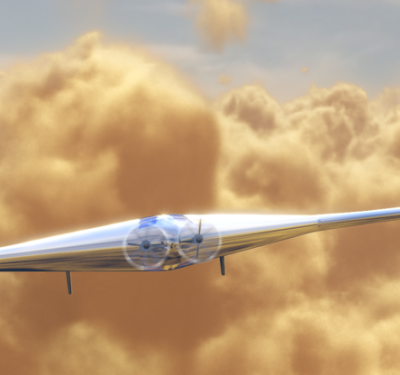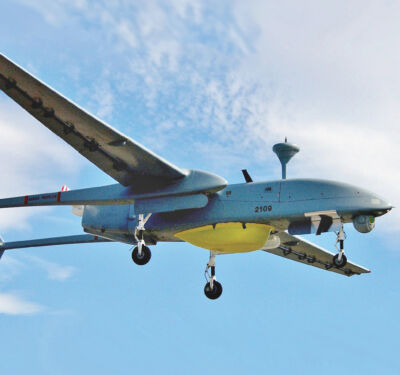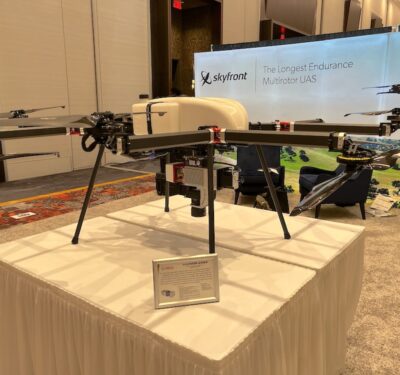
Textron Systems’ Aerosonde unmanned aircraft has seen its use on Navy ships expand over the past year, and its maritime presence could increase further with the vertical takeoff and landing system for the Aerosonde that could see it find a home on a wider variety of vessels.
In just over a year, “we have grown from one ship to four active Navy vessels, two ESB-class [Expeditionary Sea Base] ships and two DDG-class [Destroyer] ships,” said Wayne Prender, Textron’s senior vice president of Air Systems.
The Aerosonde operations are done on a fee-for-service basis, flying traditional intelligence, surveillance and reconnaissance missions but also flying a variety of other multi-intelligence missions such as conducting wide-area searches and carrying synthetic aperture radar.
“It is at the hands of that ship’s commander and the Sailors on board that ship operating the missions how they configure that UAS for whatever mission they need,” Prender told Inside Unmanned Systems.
He said Aerosonde has a couple of big advantages for Navy ships: Its Lycoming EL-005 engine uses heavy fuel, like most everything else on a ship, so it reduces the logistical burden, and its support systems, including its recovery net, can be quickly set up and integrated on Navy ships.
“We’ve really honed our ability to rapidly deploy, install this system, qualify it on that specific ship and almost immediately showcase our ability to provide real-world, operational relevance right off the bat,” Prender said. “After now going through four ships, in close coordination with the Navy it, is practically plug and play.”
Going Vertical
The company also recently qualified its relatively new Hybrid Quad system, which adds propellers to give the Aerosonde the ability to take off and land vertically. (The system is also of interest to the U.S. Army; in March, Textron Systems was one of five companies selected to develop prototypes for the Future Tactical Unmanned Aircraft System Increment 2.)
VTOL capability lessens the Aerosonde’s footprint further and “opens up additional mission sets and additional host ships that may not have the space or infrastructure for launch and recover equipment,” Prender said.
Textron Systems recently completed some pre-deployment exercises in anticipation of pending Navy operations that could call for such a capability.
“Really, the main benefit is it’s going to open up [Aerosonde operations] for ships with smaller decks, with smaller hangars, and more constrained physical footprints,” Prender said. It would also enable a system to be swapped from one ship to another more rapidly or even offloaded to a land-based location.
The VTOL version also provides a new capability in which the Navy has shown recent interest: Cargo delivery.
“The ability that VTOL is going to provide is the ability to take off from one ship, transit either to another ship or a land-based location, drop off some critical components, and then re-take off, where maybe launch and recovery equipment is not pre-positioned,” Prender said.
He said the Navy has been recovering UAS from ships for decades, but the idea of using VTOL systems for cargo delivery is relatively new, and one the Navy will need to develop concepts of operations (CONOPS) and tactics, techniques and procedures for “as they progress them toward more operational, real-world mission sets.”
Asked if the development of VTOL systems is the result of Navy demand, Prender said, “I think it’s a meeting of the minds. Certainly, we understand through our conversations, reading their source documents, listening to them as we operate side by side for over 20 years, how their mission set is changing, how their CONOPS and the INDOPACOM [U.S. Indo-Pacific Command] fight, and other maritime fights, regardless of the region, are going to necessitate a change in how UAS operate. We kind of foreshadowed what was going to happen, we started working on it, meanwhile through their exercises and wargames, they have also determined that this capability is something they need in their arsenal.”






